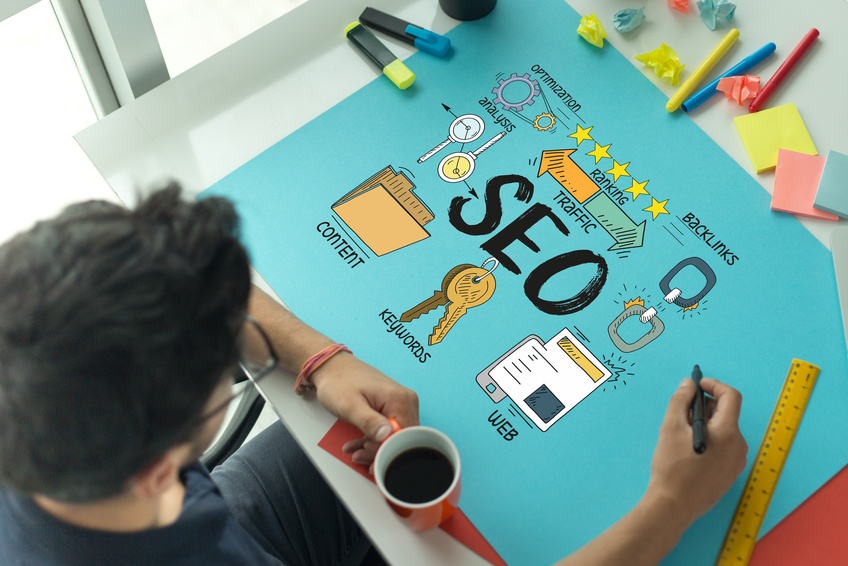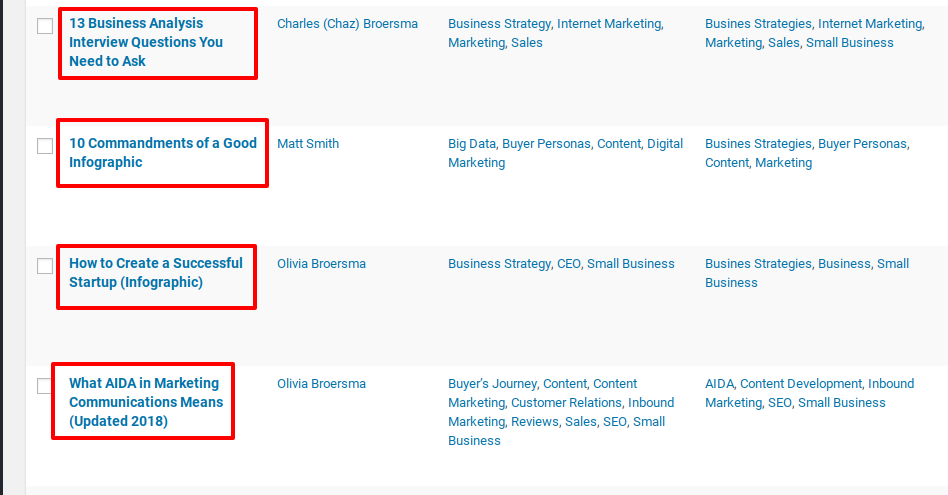
The point of having an internet presence is to help and educate searchers on your business, your topic, or your industry. But, before your content can reach out to a viewer, they need to be able to find your content page. That’s where on page SEO factors come into the picture.
There are a lot of ways you can optimize your pages to rank higher and be found. Some tips and tricks will be more effective than others at ranking your pages higher and you might have to do some experiments on your own to figure out what those are for you.
The following tips are a collection of commonly held tips from top industry influencers and some practices that I try to include in every Cazbah blog post as well.
If you’re not familiar or don’t feel super comfortable with SEO techniques, this article is a great way to get started and build your knowledge! Keep reading!
On Page SEO Factors Checklist
1. Keyword in the URL
This is one of the best ways to optimize your page. Google uses a page’s URL to help them determine what the page is about.
If you include your keyword in your URL, it gives search engines a better idea of what the article is about and it also sets an expectation for readers. Searchers are more likely to click on your result if they see the keyword they searched for right in the URL of your page.
Higher CTR will in turn send signals to Google to boost your page higher in the results.
2. Keyword in the Title Tag
Along with including your keyword in the page URL, you should also include it in your page headline or title tag. Your title tag is the first interaction a search engine or user has with your page, so it’s important that your page title has the keyword they’re searching for in it. Your title needs to put up a strong face because it’s representing the rest of the article to come.
A compelling title is what draws a viewer in and causes them to click on your result. If your title is boring or doesn’t relate to what they searched, viewers won’t click on your webpage. You need to associate your page, as much as possible, with your chosen keyword.
3. Keyword In the Meta Description
The meta description, or snippet, is the short synopsis of the webpage that appears under the search result on the results page.
You can set your own meta description, but if you don’t Google will automatically take the first characters that appear on your page and use them to create that snippet. That’s why it’s so important you include your keyword in the first couple sentences of your content or that you include it in your meta description. Searchers won’t click on a result that isn’t optimized with their searched keyword in the supposed page description.
Additionally, when your target keyword is present in your meta description, it is bolded in the results page so it sticks out, adding visibility to your result. Like the page URL and title tag, the meta description is part of the first impression search engines and searchers have with your content, so it needs to grab their attention.
4. Brackets, Parentheses, #s
According to industry leader Brian Dean, including brackets, parentheses, and numbers in post titles helps them rank higher because searchers are more likely to click on titles that stand out or that set an expectation in the reader’s mind.
Visually, your title will stand out in on results pages. Including these literary symbols will also give assurances to the searcher of what reading your page will accomplish. Searchers like the idea that their time will be well spent if they’re given a guarantee up front.
5. Include Social Media Share Buttons
If your site has a blog section, you should be including social share buttons of every article page.
Most readers aren’t going to copy your articles URL, log into their Facebook account, past that link, and then publish their own post. That takes too much work. Meet your viewers half way and give them an easy way to share your post on page if they like it! Include the big social media sites like Facebook, Twitter, and Linkedin.
If you’re an ecommerce business you may also want to include links to Instagram and Pinterest as well, especially if you’re selling on those sites already.
6. Longer Content Means More Keywords
If you type more words, you’ll naturally include your keyword more. You’ll also include closely related keywords (or LSI keywords). Search engines can tell the difference between keyword stuffing and natural keyword placement, so only include your keyword in the text if it makes grammatical sense. But, the more your keyword is naturally present the better ranking it will achieve because of its capability to answer a searcher’s query.
7. “Searches Related To”
When you optimize your webpage for a specific keyword, it will also begin to rank for other short and long tail keywords. To get the most out additional keyword ranking, you need to figure out what keywords you’re page will most likely be ranked for.
You can do this by scrolling to the end of Google’s result page to the “searches related to” section. This section has other phrases commonly searched that are related to your specific keyword. You can use those phrases to include LSI (Latent Semantic Indexing) keywords in your page content. LSI keywords are used to determine a common searchers path when they search a specific keyword.
By optimizing or addressing those topics in your page content, your page will rank better because it provides a comprehensive answer to searchers’ questions.
8. Short Paragraphs and Multimedia
Several studies have shown that viewers read in an “F shape” pattern. Viewers read the header and maybe the first and last sentences of a paragraph to get the gist on what’s written. So, it’s important to keep your paragraphs short so viewers are actually inclined to read them.
Pictures, videos, charts, and links are also a great way to break up your text and add visual value to it. Your added media should add value and further expand on the ideas in your content.
In many cases, videos or images are easier to understand and viewers’ eyes will naturally be drawn towards them. This strategic layout and design style will encourage people to stay on your page longer because your content is more helpful and interesting to read.
Longer on page sessions let search engine’s know that your page is offering searchers what they want and your page will begin to rank higher as a result.
9. Alt Text Images
Alt Text (Alternative Text) is just that, an alternative way to assign an image content value. When Google or any search engine crawls your page to index it, alt text is read as well. It helps search engines understand the flow and ideas of your article. When you use Alt text to categorize an image, you also have the opportunity to pop up in a Google images search.
10. AMP Pages
Quick load time is essential in today’s hyper-speed internet world. Webpages can get bogged down by low quality videos, overly complex images, or simply low rate servers.
AMP pages are becoming increasingly popular resource for faster loading pages. AMP pages focus on loading content quickly and not so much on any additional videos, images, or icons. While those additional media forms may load on the site, AMP pages are designed for quick content consumption.
WordPress does include a downloadable plug in in their services that automatically creates AMP, as well as, regular webpages.
If you optimize your site for speed, you’ll have longer on page session times.
11. Internal Links
Linking is a great way to boost page ranking. While backlinking definitely has several benefits for validity and value rankings, on page internal rankings help to boost an important page’s rank.
If you have a thorough, important piece of content that you want to rank higher, make it a point to link back to it as often as you can. Make sure your linking is relevant and include in-text links to that page or article from several other pages within your site.
Search engines will see all those internal links to that page and rank it higher because of the importance you have place on it. If that page is able to maintain a high CTR, it will continue to have a valuable top spot in search results.
In Conclusion
These 11 on page SEO factor tips will help get your webpages ranked higher by search engines. These tips come from industry leaders who have proven their effectiveness and are used here at Cazbah on a daily basis as well. Practicing these SEO strategies will help you become more familiar with how search engines function so you can create the best ranked pages for your business.

